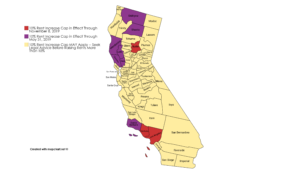As the recovery from California’s wildfires, and related protections against rent gouging continue, CAA would like to remind its members of its updated compliance paper — Anti-Price Gouging Laws – States of Emergency.
CAA has updated this Industry Insight paper to address more frequently asked questions and to address changes to the law under AB 1919 by Assemblyman Jim Wood, D-Healdsburg.
Wood’s legislation clarifies existing law that makes it a misdemeanor to raise rents more than 10 percent after a state of emergency is declared.

Emergency declarations prompted by wildfires in 2017 and 2018 triggered the state’s anti-price-gouging protections, which prohibit raising the price of many consumer goods and services, including that of rental housing, by more than 10 percent above pre-emergency levels after an emergency has been declared. Protections against rent-gouging apply to existing tenants and at unit turnover.
At this point, California’s anti-price gouging protections are slated to remain in effect through May 31, 2019, for Lake, Mendocino, Napa, Santa Barbara, Shasta, Siskiyou and Sonoma counties. Protections against price gouging under state law also are in effect until November 2019 for Butte, Los Angeles and Ventura counties.
However, anti-price gouging protections apply anywhere in the state where there is increased consumer demand as a result of a declared emergency. For example, if a fire in San Diego County causes residents to relocate to neighboring Imperial County, landlords in Imperial County may not raise rates by more than 10 percent to take advantage of the increase in demand for housing.
In addition to reading CAA’s Industry Insight, landlords in counties named in declarations of emergency — and anywhere in the state — are encouraged to seek legal advice before raising rents by more than 10 percent.

